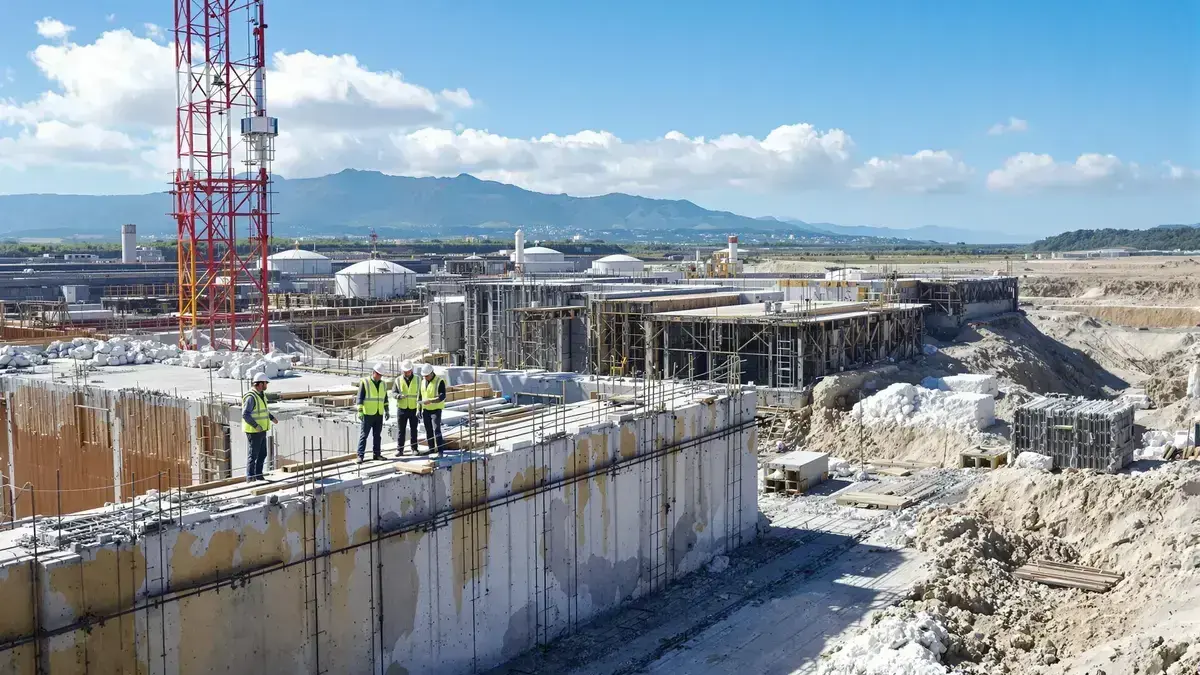Japan is at the forefront of technological innovation with the development of a revolutionary cement that is 50% stronger, designed to withstand earthquakes. This material, called CSRGF (Colloidal Silica Recovered from Geothermal Fluids), is made from geothermal waste and enhances soil stability while reducing the carbon footprint. Its applications range from seismic zones to coastal infrastructure, promising protection against erosion and rising sea levels.
The essence of the information
- Japan is developing a cement that is 50% stronger to combat earthquakes.
- Made from geothermal waste, this cement transforms waste into a valuable resource.
- It improves resistance to liquefaction, making infrastructure more stable in seismic areas.
- This ecological process supports carbon neutrality by 2050.
Japan Innovates in Technology
Japan, a country often faced with the challenges of earthquakes, is showing exceptional dynamism in technology by developing a revolutionary cement that is 50% stronger to counter the devastating effects of earthquakes. This technological advancement is not only a response to natural challenges, but also marks a significant shift in resource utilization.
Cement Produced from Geothermal Waste
This cement, known as CSRGF (Colloidal Silica Recovered from Geothermal Fluids), is innovative not only because of its strength but also due to its production method. By converting geothermal waste into a valuable resource, Japanese engineers are demonstrating a sustainable and efficient pathway to the future of construction. This approach helps in reducing waste while creating a high-quality building material.
A Hydrogen Hybrid Engine Tested by NASA: A Breakthrough That Could Finally Reduce Airplane Emissions
Strengthening Soil Stability
CSRGF represents a huge leap forward in soil stabilization technology, with a 50% improvement in resistance to liquefaction compared to traditional methods. This phenomenon is particularly critical in seismic areas where the ground can lose its stability during an earthquake. Thanks to this investment in research and development, Japan is committed to creating more resilient and safer infrastructure for its citizens.
Applications in Seismic and Coastal Areas
The applications of this cement are not limited to high-risk seismic zones; it is also suitable for coastal regions where erosion and rising sea levels pose increasing threats. By integrating CSRGF into construction projects, engineers can better protect essential infrastructure while ensuring the sustainability of these structures against environmental dilemmas.
Reducing the Carbon Footprint
Another major benefit of this innovation is the significant reduction in carbon footprint. By reusing existing resources instead of extracting new materials, Japan is taking a decisive step toward more environmentally friendly construction. This production process meets ecological standards while addressing the growing demand for building materials.
Potential for Global Adoption
The potential of this technology extends far beyond Japanese borders. With global carbon neutrality targets established for 2050, the adoption of this cement could revolutionize the construction sector worldwide. Countries facing similar environmental challenges could benefit from Japan’s experience by integrating CSRGF into their infrastructure projects for greater sustainability.
Applications Beyond Earthquakes
The functionalities of CSRGF are not limited to strengthening against earthquakes; they extend to protecting historical sites. The reinforcement techniques provided by this cement help preserve the integrity of these monuments, offering greater resistance to natural elements. This demonstrates a commitment to conserving cultural heritage while innovating in the construction sector.

